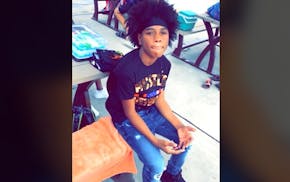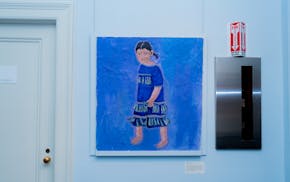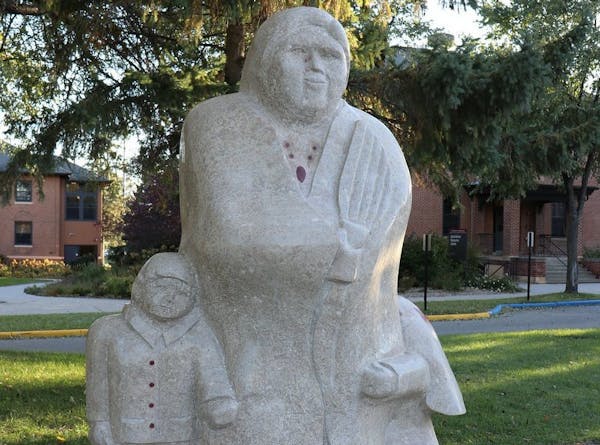I have always tried to show solidarity with the Native American community.
As the first Black editor of my college newspaper, the MSU Reporter at Minnesota State Mankato, I banned the use of team mascot names that were offensive to the Indigenous community. At 20 years old, I knew I had a responsibility to develop a greater understanding of Native American culture and history and to be a real, accountable ally.
But there is so much I don't know. That's why I was stunned when I learned about the 215 unmarked graves (the numbers are well over 1,000 after subsequent searches) discovered at the site of a former boarding school for Indigenous children in Canada. Weeks later, U.S. Secretary of the Interior Deb Haaland announced a federal investigation to find and identify the remains of the individuals, many of them children, who attended government-operated and federally funded schools for Native Americans in the 1800s and the 1900s. The investigation aims to return the remains to their families and tribes, while also acknowledging the intergenerational wound produced by these policies. At the University of Minnesota-Morris, students have also demanded a proper search for unmarked graves since the university is located on the site of a former boarding school.
"We're never going to know these true numbers," said Allison Waukau (Menominee/Navajo Nations), Hennepin County Library's Native American community liaison. "What really sucks too is that people think, 'Oh, if we acknowledge it, then we have to atone for our sins.' Non-natives think, 'We're not responsible for that, we didn't do that.' But I think we have the ability now, in this day and age, to be like, 'This was wrong and we can be respectful from here on.' "
The boarding schools were created to strip Native Americans of their history, language, customs and their distinct tribal and cultural differences through separation, intimidation, abuse and coercion.
Children were ripped from their families and then they disappeared. Many died without any closure for those who loved them — all in the name of cultural genocide amid a land grab that stole hundreds of millions of acres from tribes across the country.
Before the recent stories about unmarked graves, I understood the existence of boarding schools, but I was ignorant about the degree of trauma they inflicted. Like the unmarked graves, Native American history has been buried by a country that knows it cannot be discussed without the admission of complicity. A nation that grew through the theft of foreign land teaches a one-sided tale about its emergence as a global power.
I do not understand the nuance or the layers of this conversation around boarding schools and their collective effect, but I do know our next task is to listen, learn and commit to action in solidarity with the Native American community as it pushes forward to tell a story of lost ancestors, the long-term impact of racist policies and a tangible resilience.
The Native American community is not a monolith and its reflections and perspectives on the impact of boarding schools and the experiences attached to them might vary, but there is consensus about the impact of the country's failed attempt to erase their culture: the pain and the problems it caused remain.
"It doesn't, in the least, surprise me that people are shocked and surprised to hear there are more unmarked graves in the United States than there were in Canada," said Antony Stately (Ojibwe/Oneida), the president and executive officer of the Native American Community Clinic who attended boarding schools in his youth. "It doesn't shock me or surprise me at all and it's because the United States, by and large, has done a good job of hiding that story."
The attempt to force assimilation is still felt by an Indigenous community that has faced the highest rate of poverty in America, said Brenda Child, the Northrop professor of American Studies at the University of Minnesota and a former chair of the school's Department of American Studies and the Department of American Indian Studies. Per Northwestern's Institute for Policy Research, nearly one in three Native Americans live in poverty. The effect of the abuse, both sexual and physical, and inhumane conditions that led to widespread illness at the residential schools is a culprit in the current challenges the Indigenous community has had to overcome.
But it's important, Child said, to acknowledge the strength within the storm. Native Americans continue to thrive and grow and prosper and fight to protect their legacies and the culture they encompass.
"I sometimes don't want to say things were tragically lost and they're gone because we've done such a great job of preserving things and revitalizing them today, so at the University of Minnesota, you can major in Ojibwe language and get a four-year degree in Ojibwe language and the same is true of Dakota, the two Indigenous languages of Minnesota," said Child (Ojibwe/Red Lake), author of the book, "Boarding School Seasons: American Indian Families, 1900-1940." "Things were damaged, things were hurt, but they're not gone."
At this stage, people can choose to offer support as those impacted encourage officials to seek answers pertinent to the past of the Indigenous community. That's the choice I'm going to make. Every unmarked grave at a former boarding school holds a story. And each story deserves to be told.
"I think there is an opportunity to be respectful of these kids," Waukau said, "that never made it home."
![George Floyd's daughter Gianna Floyd, 6, looks to her mother Roxie Washington during a press conference at Minneapolis City Hall. ] LEILA NAVIDI •](https://arc.stimg.co/startribunemedia/WSDMNXVK3VZJDLDP3BTMCSMXNU.jpg?h=91&w=145&fit=crop&bg=999&crop=faces)
Medcalf: Hateful comments made after recent column on George Floyd's daughter left me discouraged

Medcalf: This summer, let's all be more vigilant about our children — and everyone else's

Medcalf: Mia program provides safe space for young people to create

Medcalf: George Floyd's daughter, now 11, on life without her dad: 'It's hard'


